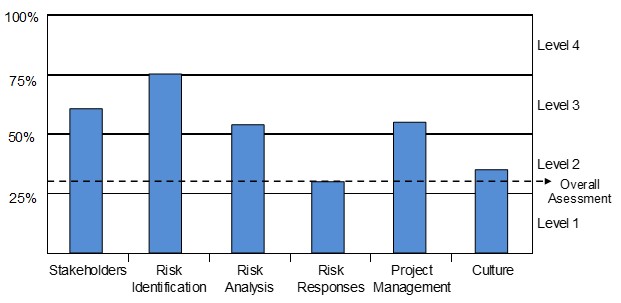A brief guide
Practical Project Risk Management
SERIES ARTICLE
By Martin Hopkinson
United Kingdom
Purpose
Any project risk management process is designed, implemented and exploited by people. The word culture can refer to the behavioural characteristics of a group of people e.g. project team. As used to describe individuals, the word culture may also refer to their level of education and sophistication. Both senses of the word are relevant to project risk management culture. The risk management process is critically dependent upon constructive behaviours between people and their ability to develop and exploit information that may be complex and contentious. The purpose of this guidance sheet is to identify factors that influence risk management culture.

The above figure is taken from the Assessing Risk Management Capability guidance sheet (Feb 2024). It shows how the Project Risk Management Maturity Model (RMM) can be used to assess risk management culture in the context of the overall risk management process. The Project Risk RMM questions that contribute to this measurement are as follows.
Project Risk Maturity Model questions related to the culture perspective
Questions related directly to the Culture perspective:
- Is risk management fostered by a good climate of trust within the project team?
- Is risk management fostered by a good climate of trust between stakeholders?
- What is the project’s approach to individuals responsible for the management of risk? (Is good risk management practice recognised and supported?).
- How consistently does the project implement timely responses to risk?
- Do people involved with the project understand and use their scope of freedom to act?
- Is there an appropriate risk management plan that is used in practice?
- From what point did the project risk management process commence?
- What is the project’s record in respect of risk acceptance? (Does it avoid a defensive ethos and exploit opportunities whilst also avoiding the acceptance of excessive risk?).
More…
To read entire article, click here
Editor’s note: This series of articles is by Martin Hopkinson, author of the books “The Project Risk Maturity Model” and “Net Present Value and Risk Modelling for Projects” and contributing author for Association for Project Management (APM) guides such as Directing Change and Sponsoring Change. These articles are based on a set of short risk management guides previously available on his company website, now retired. For an Introduction and context for this series, click here. Learn more about Martin Hopkinson in his author profile below.
How to cite this paper: Hopkinson, M. (2024). Project Risk Management Culture: A brief guide, Practical Project Risk Management series, PM World Journal, Vol. XIII, Issue IV, April. Available online at https://pmworldlibrary.net/wp-content/uploads/2024/04/pmwj140-Apr2024-Hopkinson-Project-Risk-Management-Culture-brief-guide-2.pdf
About the Author

Martin Hopkinson
United Kingdom
![]()
Martin Hopkinson, recently retired as the Director of Risk Management Capability Limited in the UK, and has 30 years’ experience as a project manager and project risk management consultant. His experience has been gained across a wide variety of industries and engineering disciplines and includes multibillion-pound projects and programmes. He was the lead author on Tools and Techniques for the Association for Project Management’s (APM) guide to risk management (The PRAM Guide) and led the group that produced the APM guide Prioritising Project Risks.
Martin’s first book, The Project Risk Maturity Model, concerns the risk management process. His contributions to Association for Project Management (APM) guides such as Directing Change and Sponsoring Change reflect his belief in the importance of project governance and business case development.
In his second book Net Present Value and Risk Modelling for Projects he brought these subjects together by showing how NPV and risk modelling techniques can be used to optimise projects and support project approval decisions. (To learn more about the book, click here.)
To view other works by Martin Hopkinson, visit his author showcase in the PM World Library at https://pmworldlibrary.net/authors/martin-hopkinson/









